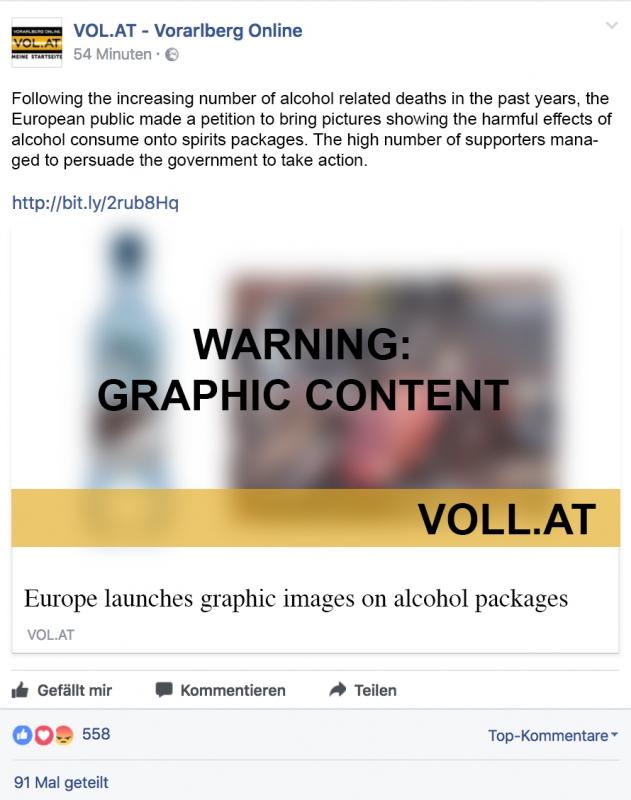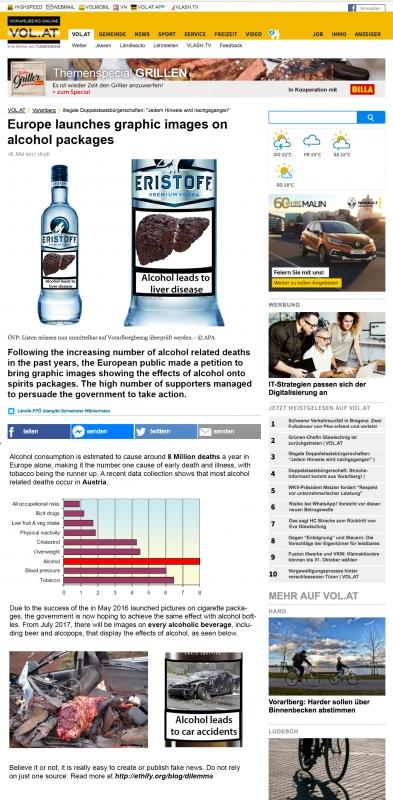Submitted by dilemma on


Following the recent launch of pictures on tobacco packages, would it be a surprise that the graphic images visualizing the horrifying impacts of the substance would also appear on alcohol, a similar –if not more so - addictive drug?
We decided to get to the bottom of this. In an attempt to create a credible fake news story, we drafted a newspaper article that features the introduction of graphic images on alcohol packages in Europe.
Currently, more than 25 countries worldwide sell cigarette cases which display the effects of excessive smoking, including severely damaged teeth, lung cancer and even a dead human being. The first country to fabricate the eyebrow-raising packages was Australia in 2012.
When it comes to the impact they have had so far, different sources come to different conclusions. While some suggest the images are more effective than the written warnings, others claim that they do not encourage to stop smoking at all, instead the number of smokers is believed to be rising, still.
What they have in common, however, is the thought that updating the pictures regularly might have a bigger impact since the consumers will eventually become desensitized otherwise.
Excessive alcohol consumption kills many people every year, as it is one of the main causes of car accidents, leads to liver damage, increases the risks of cancer etc. Therefore, it can’t be considered any more harmless than tobacco and the images might work, which is why we wrote our story.
Rosi (interviewed on the street): “Horrible images on alcohol bottles are long overdue, alcohol kills so many people, I think it’s a good idea.”
“Europe launches graphic images on alcohol packages”, the title of our made-up story, could therefore be a headline we might read in the news sooner or later.
Along with the headline we created a short article which is meant to appear in a newspaper. It features a few paragraphs about the subject and includes fake statistics to underline the statement. A graph shows the number of people who decease every year due to alcohol abuse. The numbers are highly exaggerated. In addition to that, we selected Austria to be the country in which most of these deaths occur. This should cause the viewers to feel more affected.
As for the presentation, we “published” the article on the Facebook page of “vol.at”, a regional press agency. We also came up with two examples to visualize what the new alcohol labels could look like.
Thanks to the new cigarette cases, we could observe that graphic images, such as the depiction of a diseased body part, are more effective than for example grave stones as a metaphor of possible death. Therefore, the depiction of a damaged lung and a car accident seemed to suit best.
We think that our fake news story could be a good way to learn how the public would react to the idea of new alcohol packages and how fast fake news can spread.
Linda Burtscher, Ida Windisch


